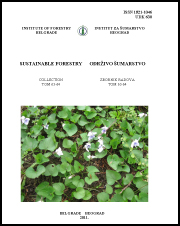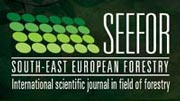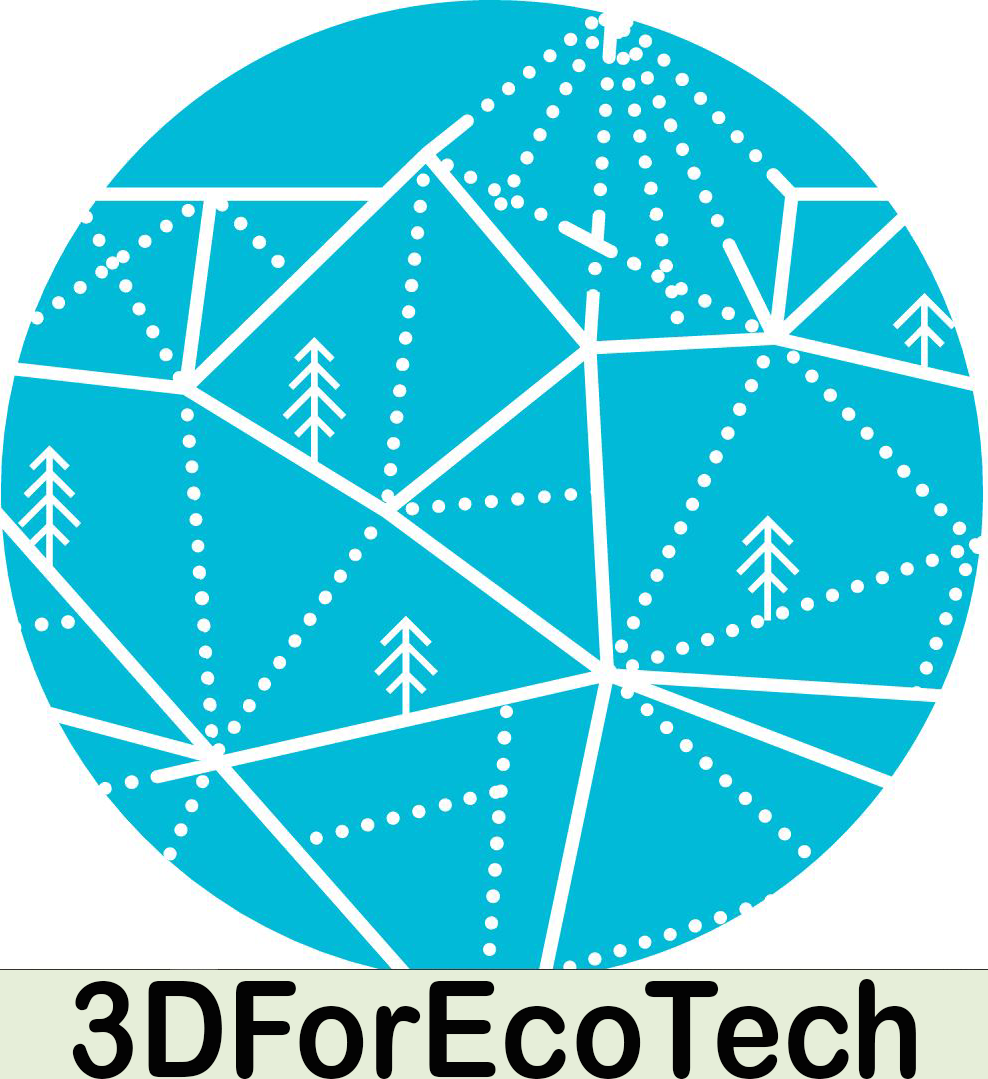Monitoring vitality of forest resources
Forest condition in the Republic of Serbia has been monitored under the International Co-operative Programme on Assessment and Monitoring of Air Pollution Effects on Forests (ICP Forests). ICP Forest monitors forest condition or its vitality at two different monitoring intensity levels. One is based on a systematic network of 130 sample plots (Level 1) arranged in a square network of 16 km x 16 km and 4 km x 4 km on the territory of the Republic of Serbia. The second level (Level 2) includes 5 intensive monitoring plots in selected forest ecosystems. Forest condition in the Republic of Serbia has been continuously monitored through the network of sample plots since 2003.
The aims of the programme are to provide a periodic overview on the spatial and temporal variation of forest condition in relation to anthropogenic and natural stress factors (in particular air pollution) and to gain a better understanding of the cause-effect relationships between the condition of forest ecosystems and these factors. The results provide data on the vitality of forests, air pollution, climate change and the state of biodiversity. Besides the soil solution chemistry and nutrition of forest trees, one of the main parameters that has been continuously monitored on each tree (during the growing season) is the absence of assimilation organs, i.e. percentage of defoliation and discolouration. The degree of defoliation and discolouration is expressed through a 5 class system. The following scale is used for the purpose of defoliation ranking: no defoliation (0-10%), slight defoliation (> 10-25%), moderate defoliation (> 25- 60%), severe defoliation (> 60 <100%), dead trees (100%), and this one for the purpose of discolouration assessment: no discolouration (0-10%), slight discolouration n (10-25%), moderate discolouration (> 25- 60%), severe discolouration (> 60%).
Level 2 intensive monitoring is a multipurpose system of research. The assessment criteria of intensive forest monitoring have been defined and harmonized in such a way that after the data on forest condition are entered and statistically processed, they can be easily compared, both analytically and logically, and further used as a basis for various comparative studies. Level 2 monitoring program includes the following groups of parameters: crown condition, foliar chemistry, soil chemistry, soil solution chemistry, tree growth, ground vegetation, atmospheric depositions, ozone injuries, meteorology, phenology, and litterfall. These parameters of studying natural systems are analyzed by applying different methodological approaches depending on the results we want to obtain.
GIS as a support to the promotion and protection of natural resources
Geographic Information System (GIS) is a digital tool designed for graphic and alphanumeric presentation of spatial data. It can store and manipulate a large number of spatial data, perform spatial analyses and create models. GIS approach to research, promotion, and protection of natural resources is a procedure that provides the most adequate representation of all data in the actual coordinate system. As a support tool, GIS can be used in various stages of monitoring the vitality of forests, from mapping the network of sample plots (SP) and sample plot marking in the field supported by GPS (Global Position System) handheld devices to entering data into a GIS system, making analyses and models and data storing according to GIS procedure.
The special value of this digital approach is the ability to manipulate data obtained in the field, compile reports, share data over the internet and perform on-line entry of data into the European central data storage facility at the ICP Forests Programme Coordinating Centre (ICP Forests PCC) in Hamburg and to encourage cooperation with the headquarters of forest monitoring in Europe. New data are entered into the GIS system of the NFC (National Focal Centre for Forest Condition Monitoring) of Serbia every year, which will produce a very valuable archive for future scientific research and analysis of the vitality of forests of the Republic of Serbia. Furthermore, GIS methodology provides great opportunities for developing simulation models to predict the future state of vegetation cover, soil, the environment, where the past work of data collection in the field plays an important role.
The methodological approach - Research of spatial, ecological relations
- Collection of relevant data on space or ecosystems components necessary for decision-making (with emphasis on the existing scale of geographic material and data, thematic maps).
- Study of maps of ecosystem components (e.g. water, soil, vegetation) to explore problems and potentials of the investigated area. Verification in the field if necessary.
- Preparation of the component overlay maps to explore the relationship between individual spatial components (for example, to what extent the existing forest complexes occur in wetland areas).
- Development of general objectives and tasks of a project, emphasizing measurable and mappable structural attributes.
- Implementation of Geographic Information System (GIS) based procedures to generate priority maps of protection. Priority protection of natural resources is identified on the basis of objective, clearly stated criteria.
- Review of priority maps, verification in the field if necessary, and evaluation of the resulting maps. Revision of criteria, only if the priorities do not meet the defined requirements.
- Synthesis of the resulting knowledge on the characteristics of ecosystems, space, landscapes.
Protection programs and strategies for the protection of ecosystems, soil and landscapes and restoration based on the development objectives.
- Development of the monitoring and evaluation plan for the strategy to improve landscapes, space, and forest complexes.
Soil and Water Resources Protection
The department also deals with the study of soil and water resources protection where it applies scientific and engineering principles for the improvement of human and natural systems. The main scope of work includes:
- watershed management; soil and water protection against degradation, and prevention of natural disasters in terms of biological, ecological, economic and social consequences:
- Reduction of flood risk by adopting active and passive measures of protection against high water, with a combination of investment and non-investment measures;
- Protection of water reservoirs against sedimentation by applying anti-erosion measures of watershed management;
- Reduction of sediment transport and deposition;
- Reduction of pollution of soil, water, and the environment from various sources;
- Design of projects for the protection of soil and water against degradation, land reclamation and improvement of degraded areas.
The Methodology of researching the intensity of erosion processes and sediment production in torrential catchments comprises the following:
- Collection of technical documentation and cartographic material
- Data collection in the field
- Data processing
- Mapping the erosion by the method of prof. Dr. Gavrilovic, S.
- Calculation of sediment yield by the method of `potential erosion`, developed by prof. Dr. Gavrilovic, S.
The methodological approach in the field of forest policy
Research in the field of forest policy belongs to the group of applied research. The main objective is to explore the current state in, for instance, management of protected natural areas in Serbia and assess the management capacity. These research studies belong to the group of deductive studies because they are based on the existing theories, or a series of explanations which are implemented and tested against observations. The studies are both illustrative and exploratory. Their illustrative character is reflected in the descriptive summary of the current state of the protected natural areas, including historical facts that have led to the current situation, and they are exploratory because they study the current trends of protected natural area management. The research is carried out in the form of a case study, which is defined on the basis of data collected in the field. The case study is based on an approach that deals with the actual situation in a certain period of time. It establishes the cause-effect relationships and one of its advantages is that it enables the study of the effects in a real-life, physical context, recognizing the context as a strong fact of both the cause and the effect. Apart from the case study, a pilot study is often used as a study method. Pilot studies are carried out to help define plans, in terms of both data content and procedures that must be followed. Therefore, it is important to note that the pilot study is not a pre-testing. It is more than that because it helps define a series of relevant questions, or even specificy the conceptual framework of a future research study.
The research uses mainly secondary written data - scientific and technical publications, reports made by different domestic and foreign agencies in the field of forest policy, published and unpublished documents, reports of non-governmental organizations, newspaper articles and other sources important for further research.
In order to collect primary and secondary data, it is necessary to define a methodological approach. Primary data are collected using case studies. The case study is specific, descriptive, and it studies the problem in depth. This method of scientific research provides a subjective vision of a problem based on the collected data and individual interviews.
Different scientific methods are applied depending on the research aims and purposes. General scientific methods include hypothetical-deductive method, comparative method and statistical method. The method of analysis and synthesis, generalization and specialization are used as special scientific methods. Analysis and synthesis are used for the purpose of drawing conclusions and synthesizing data on the management of PAs.






